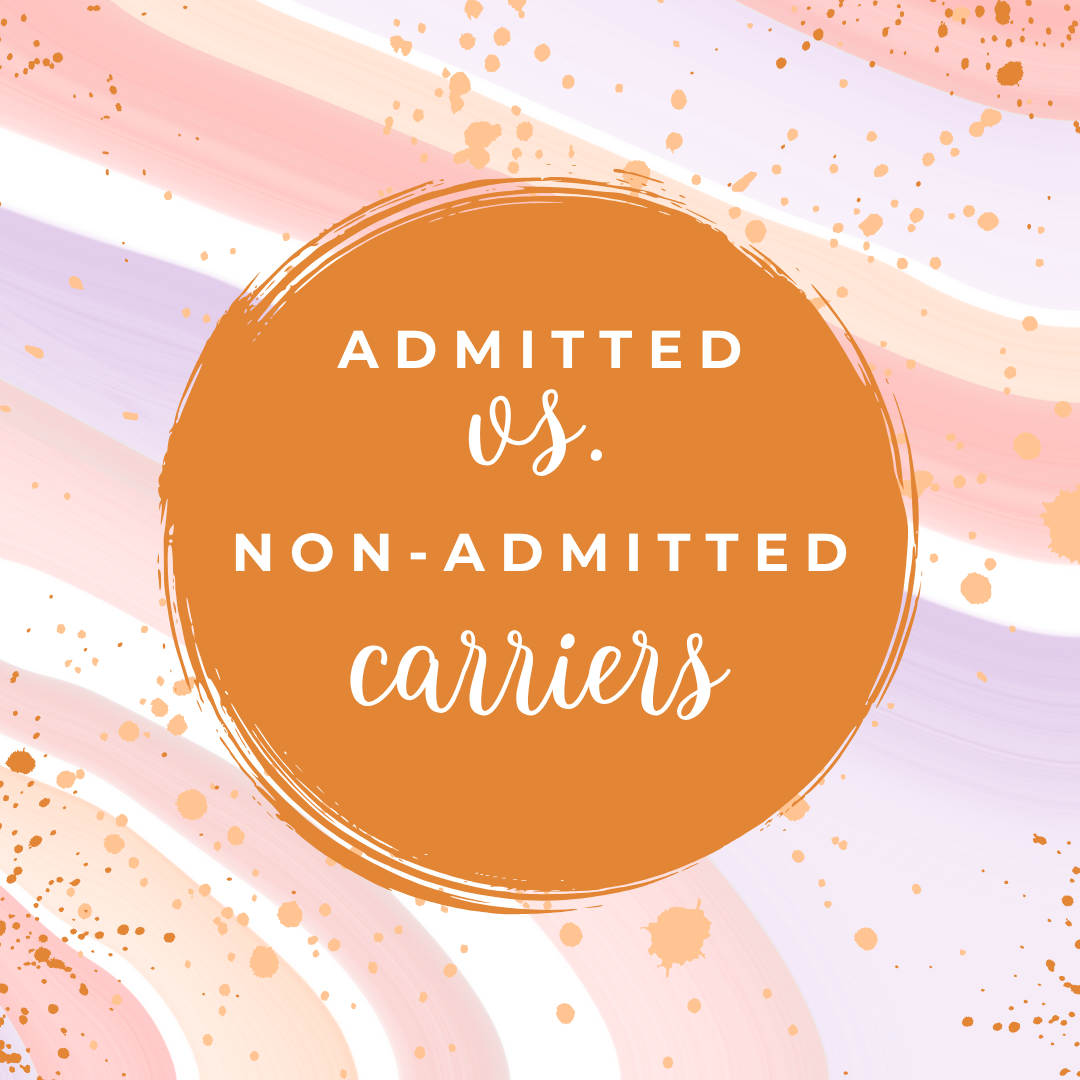Insurance carriers fall into two regulatory categories: admitted carriers and non-admitted carriers (also known as surplus lines carriers). So, what's the difference? Admitted carriers are approved and regulated by the state's Department of Insurance. Non-admitted carriers, on the other hand, are overseen by the Surplus Lines Office. While the term "non-admitted" might sound like these carriers are less legitimate, that's not the case. Both types are regulated, just through different offices. Let's take a closer look!
Admitted carriers
When you think of an admitted carrier, think of them as selling "standard" coverage. They deal with the things we're usually more familiar with, such as health insurance, auto insurance, homeowners insurance, etc.
As we mentioned previously, these carriers are approved by the state's Department of Insurance. To gain the state's approval, they go through a formal process where their rates, policy forms, and requirements are reviewed to ensure they comply with state laws and regulations. They must follow strict guidelines and have less flexibility when it comes to writing policies. There are clear, black and white rules about what they can and cannot insure with no room for gray areas.
So, what does it mean to be backed by the state? If said carrier were to go out of business or become insolvent, the state's guarantee association would step in to help pay claims (up to a set limit). Additionally, if you disagree with the outcome of your claim, you can appeal the decision to the state's insurance commissioner, who has the authority to intervene.
Non-admitted carriers
If admitted carriers handle "standard" coverage, we can think of non-admitted carriers as handling those seeking specialized or higher-risk insurance.
Non-admitted carriers (or surplus lines carriers) are regulated by the Surplus Lines Office, which has fewer restrictions than the state's Department of Insurance. This allows non-admitted carriers greater flexibility in what they can offer to cover, as well as the pricing they use! This flexibility allows them to insure unique or higher-risk exposures that admitted carriers can't.
However, because non-admitted carriers are not backed by the state, it's extremely important to make sure the carrier is financially stable. Look for carriers that are highly rated by AM Best, an independent organization that assesses the financial strength and creditworthiness of insurance companies.
In closing
Admitted and non-admitted are simply administrative classifications, but they don't speak to the quality or reliability of the insurance that's being offered. Each type of carrier has a purpose, and one isn't "good" while the other is "bad." Admitted carriers are ideal for standard risks and offer added state protection, whereas non-admitted carriers are essential for specialized, unique, or higher-risk exposures.
Almost all entertainers and entertainment companies will be insured by a non-admitted carrier. The rating code of "entertainment on another's premises" is not a code that states are willing to back, so these risks are typically placed with a non-admitted carrier (hint: that's your rating code, performers!).
The right choice depends on your specific needs. Always research your carrier before purchasing coverage. Review their AM Best rating and/or Google reviews to get a well-rounded picture of the company. If you have any questions about this blog, feel free to reach out to our office via email at info@specialtyinsuranceagency.com or give our office a call at 715-246-8908!
